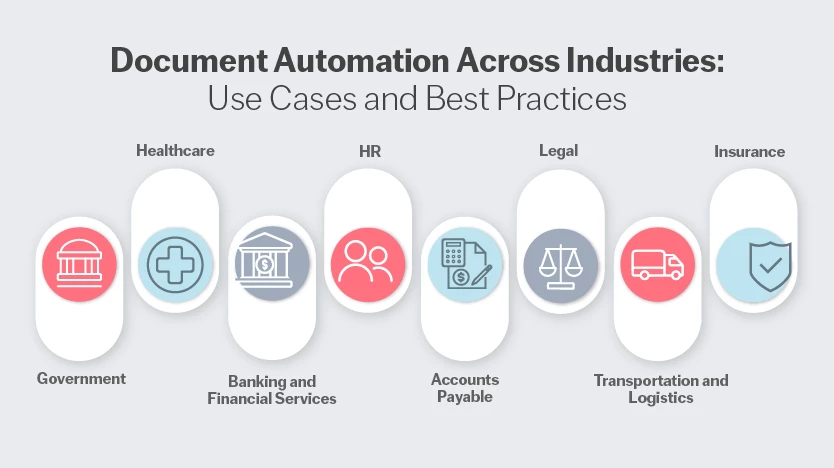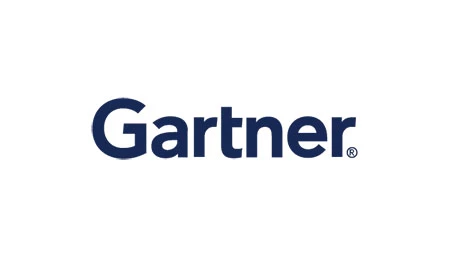
Across industries, AI-driven document automation is quietly reshaping the way work gets done. Businesses are speeding up processes, reducing human errors, improving regulatory compliance, even automating decision-making.
But while document automation can make processes run much more efficiently, the real difference this technology makes is more fundamental. In fact, document automation is changing how organizations operate from the bottom up. Let’s take a look at how this technology is reshaping industries and what it means for the future of work.
What is document automation?
Document automation uses AI and machine learning to read, extract, and organize data from any document, making it usable for your business. It works with any document type and format (structured, semi-structured, and unstructured) to process content in documents like a human.
Over the years, document automation technology has evolved to incorporate smarter features, such as natural language processing (NLP), which enabled computers to go beyond simple character recognition to understanding the meaning of words and sentences of the text being converted.
Today, instead of having to use rigid rule-based templates, organizations can process complex, variable documents with minimal human intervention. This shift is transforming the structure of business workflows across industries.
What makes document automation important?
In short, document automation enables companies to accomplish much more in much less time. This has sweeping effects on all aspects of business. Some of the key benefits of document automation include:
Boost efficiency instantly: Repetitive, formulaic tasks—like transcribing data from documents into business systems of record—can now be handled near-instantly by widely available document automation technologies.
Eliminate costly errors: Typos and other human mistakes are common in tedious workflows. Document automation removes these manual steps, significantly improving accuracy.
Cut operational costs: By extracting data from scanned documents automatically, businesses reduce the need for manual labor. Automation also lowers training, support, and materials costs.
Ensure regulatory compliance: With fewer human errors and smart data validation, document automation helps businesses meet legal and industry standards more reliably and cost-effectively.
Unlock employee productivity: Skilled professionals spend too much time on paperwork. Document automation frees them to focus on strategic, high-value work they’re trained for and actually enjoy.
Document automation use cases across industries

Document automation for financial services and banking
Companies in the banking and financial services sector process complex documents that can take up a lot of time and effort if handled manually. Take credit applications, for example. Financial institutions must review all customer-submitted forms—including the ones filled out by hand—then verify the data and enter the data into systems.
Document automation can perform all these tasks many times faster. Benefits include:
- High accuracy: Automation extracts key details directly from applications to ensure customer data is entered correctly the first time.
- Better compliance: Automated workflows cross-check information against regulatory requirements and flag discrepancies.
- Cost savings: By reducing manual work, financial institutions lower administrative expenses and allow employees to focus on higher-value tasks.
- Customer satisfaction: By accelerating and streamlining workflows, the customer experience is enhanced, leading to higher revenue and loyalty.
Applications for document automation in financial services and banking include:
- Mortgage loan processing
- Know Your Customer (KYC) compliance verification
- Trade finance documentation
- Account services management
- Fraud prevention
- Customer onboarding
- Credit application processing
Access pre-trained document AI models for Banking and Financial Services in the ABBYY Marketplace.
Legal document automation
Legal teams deal with mountains of paperwork. In contract management, for example, everything from legal review, extracting key terms and clauses, and compliance checks revolves around documents. Automation streamlines these processes, offering benefits like:
- Improved law firm KPIs: Automation enhances efficiency, reduces turnaround times, and boosts productivity by streamlining routine legal documentation.
- Fewer redundancies: Automated workflows eliminate duplicated efforts.
- Better use of talent: By minimizing administrative work, document automation allows lawyers and legal teams to focus on high-value strategic matters.
Applications for legal document automation include:
- Key term and clause extraction
- Compliance and regulatory filing management
- E-discovery management
- Corporate legal department support
- Document review and analysis
Access pre-trained document AI models for Legal in the ABBYY Marketplace.
Document automation for finance and accounting
For accounts payable teams, processing invoices requires extracting key details, matching invoices to purchase orders, verifying payment terms, and ensuring compliance with financial policies. Document automation accelerates these processes and delivers:
- Improved accuracy: Automation helps businesses avoid costly human errors that can lead to late-payment penalties.
- Lower transaction costs: By minimizing manual intervention, businesses reduce administrative costs and free up team members for more strategic work.
- Stronger AP compliance: Automated approval hierarchies offer better adherence to tax regulations, internal policies, and audit requirements.
Finance and accounting / accounts payable automation applications include:
- Fraud detection
- Tax compliance and reporting
- Invoice processing
- Purchase order processing
- Expense management
- E-invoicing
Access pre-trained document AI models for Finance and Accounting in the ABBYY Marketplace.
Insurance document automation
Insurance companies often need to review customer-submitted forms for claims processing and other functions. Document automation speeds up these processes, offering:
- Better security and compliance: Automated workflows cross-check policy details against regulatory requirements to flag potential issues.
- Lower operational expenses: By reducing manual work, insurers lower administrative costs and free employees to focus on higher-value tasks.
- Enhanced customer experience: Smooth digital interactions and streamlined approval processes mean faster transactions and responses.
Document automation applications in insurance include:
- High-volume document processing
- Document conversion and formatting
- Searchable digital archiving
- Policy underwriting
- Claims processing
- Invoice processing
Access pre-trained document AI models for Insurance in the ABBYY Marketplace.
Document automation for healthcare
Document-heavy workflows often slow down operations in the healthcare industry. To maintain good medical records, for example, hospitals and clinics must collect, verify, and process a large amount of patient information, submitted both electronically and on paper. Document automation makes these tasks more accurate and less time-consuming. Benefits include:
- Operational efficiency and cost reduction: Automating data entry, document processing, and compliance tasks reduces overall expenses.
- Improved revenue cycle management: Streamlining the revenue cycles ensures more timely and accurate billing for providers, reducing the potential for claims denials and charge offs.
- Streamlined administrative processes: Automation speeds up tasks like prior authorizations, insurance verification, and billing.
- Enhanced patient care: With instant access to accurate, up-to-date records, providers can make quicker diagnoses and better treatment decisions.
Document automation applications in healthcare include:
- Medical data integration
- Patient onboarding, intake, and registration
- Prior authorization and referrals
- Electronic health records (EHR) management
- Claims processing and insurance verification
- HIPAA and regulatory compliance
Access pre-trained document AI models for Healthcare in the ABBYY Marketplace.
Document automation for government agencies
Government agencies juggle a truly wide range of tasks, from processing parking violations to managing contract bids, with a focus on efficiency, accuracy, and fairness in citizen services. Document automation streamlines these workflows while keeping budgets in check. Key benefits include:
- Enhanced security: Automation cross-checks information against regulatory databases and flags discrepancies to meet legal requirements and prevent fraud.
- Reduced errors: Automation extracts and validates key details from documents to flag errors before they become a problem.
- Time and resource savings: Reducing manual data entry and paperwork lets agencies cut administrative costs and focus on higher-priority tasks.
Document automation applications in government include:
- Permit and license approvals
- Citizen correspondence and case tracking
- Law enforcement and criminal record management
- High-volume document processing
- Fraud prevention in digital onboarding
Access pre-trained document AI models for the Public Sector in the ABBYY Marketplace.
Document automation for human resources (HR)
For HR teams, reviewing and verifying documents like job applications and employment records is a core part of daily operations. When onboarding a new hire, for example. HR departments must review and verify identification, contracts, and other information before entering the data into various systems. Document automation makes onboarding and other key HR processes go faster. Key benefits include:
- Streamlined employee experience: Faster onboarding, payroll processing, and benefits enrollment enhance employee satisfaction.
- Time savings: Automation eliminates repetitive tasks like data entry and document verification so HR teams can focus on more strategic initiatives.
- Scalability: HR teams can efficiently manage growing workforces without increasing administrative burden.
Applications for document automation in HR include:
- Performance reviews and evaluations
- Recruiting and applicant tracking
- Employee records management
- Employee onboarding
- Payroll and compensation management
- Policy updates and distribution
Access pre-trained document AI models for HR in the ABBYY Marketplace.
Document automation for transportation and logistics
Shipping manifests, freight invoices, and other logistics documents require transportation and logistics companies to perform extensive cross-checking across multiple sources, often in different languages. Teams must validate shipping details, enter data into management systems, and ensure compliance with customs and regulations. Document automation streamlines these tasks. Benefits include:
- Higher customer satisfaction: Automation reduces delays and minimizes errors to develop smoother, more reliable service.
- Better compliance: Automated workflows verify shipping and customs documentation against regulatory requirements, flagging inconsistencies.
- Less friction in processes: Automation extracts and organizes shipment details instantly, reducing delays and improving turnaround times.
Applications for document automation in transportation and logistics include:
- Customs clearance and compliance
- Warehouse and inventory management
- Route planning, scheduling, and logistics
- Shipping and freight documentation
- Carrier contract management
- Freight invoice reconciliation
Access pre-trained document AI models for Transportation and Logistics in the ABBYY Marketplace.
The future of document automation across industries
Document automation has come a long way. Today’s intelligent document processing (IDP) can accurately extract data from structured and unstructured documents in multiple languages. But the technology isn’t standing still. In the coming years, document automation will become even more adaptive and autonomous, with self-learning capabilities that minimize the need for human intervention.
Leading this innovation is ABBYY. Powered by purpose-built AI, our advanced Document AI platform processes data in 150 languages with unmatched speed and accuracy. Its low-code design empowers users—regardless of technical expertise—to create custom automation models tailored to their unique workflows.
If you're ready to enhance efficiency and precision with IDP, connect with our experts to see how ABBYY Document AI can transform your operations.







